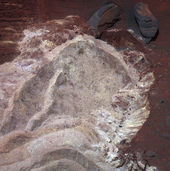
© Jim Wilson/The New York TimesA huge geothermal project north of San Francisco has raised fears of earthquakes
BASEL, Switzerland - Markus O. Häring, a former oilman, was a hero in this city of medieval cathedrals and intense environmental passion three years ago, all because he had drilled a hole three miles deep near the corner of Neuhaus Street and Shafer Lane.
He was prospecting for a vast source of clean, renewable energy that seemed straight out of a
Jules Verne novel: the heat simmering within the earth's bedrock
All seemed to be going well - until Dec. 8, 2006, when the project set off an earthquake, shaking and damaging buildings and terrifying many in a city that, as every schoolchild here learns, had been devastated exactly 650 years before by a quake that sent two steeples of the Münster Cathedral tumbling into the Rhine.
Hastily shut down,
Mr. Häring's project was soon forgotten by nearly everyone outside Switzerland. As early as this week, though, an American start-up company,
AltaRock Energy, will begin using nearly the same method to drill deep into ground laced with fault lines in an area two hours' drive north of San Francisco.
Residents of the region, which straddles Lake and Sonoma Counties, have already been protesting swarms of smaller earthquakes set off by a less geologically invasive set of energy projects there. AltaRock officials said that they chose the spot in part because the history of mostly small quakes reassured them that the risks were limited.
Like the effort in Basel, the new project will tap
geothermal energy by fracturing hard rock more than two miles deep to extract its heat. AltaRock, founded by Susan Petty, a veteran geothermal researcher, has secured more than $36 million from the Energy Department, several large venture-capital firms, including Kleiner Perkins Caufield & Byers, and Google. AltaRock maintains that it will steer clear of large faults and that it can operate safely.
But in a report on seismic impact that AltaRock was required to file, the company failed to mention that the Basel program was shut down because of the earthquake it caused. AltaRock claimed it was uncertain that the project had caused the quake, even though Swiss government seismologists and officials on the Basel project agreed that it did. Nor did AltaRock mention the thousands of smaller earthquakes induced by the Basel project that continued for months after it shut down.
The California project is the first of dozens that could be operating in the United States in the next several years, driven by a push to cut emissions of heat-trapping gases and the Obama administration's support for renewable energy.



